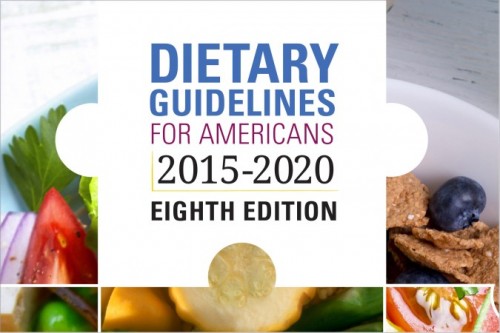 Last week, the U.S. Departments of Health and Human Services and Agriculture released the 2015-2020 Dietary Guidelines for Americans. The Dietary Guidelines for Americans is a trusted resource for evidence-based nutrition recommendations and serves to provide the general public, as well as policy makers and health professionals with the information they need to help the public make informed choices about their diets at home, school, work and in their communities.
Last week, the U.S. Departments of Health and Human Services and Agriculture released the 2015-2020 Dietary Guidelines for Americans. The Dietary Guidelines for Americans is a trusted resource for evidence-based nutrition recommendations and serves to provide the general public, as well as policy makers and health professionals with the information they need to help the public make informed choices about their diets at home, school, work and in their communities.
For individuals with a bleeding disorder, we know the important role a healthy diet can play in not only ones overall health but also in dealing with the bleeding disorder. We know that healthy bodies bleed less and that being at a healthy weight can help prevent undue stress and subsequent damage to joints.
Understanding the components of a healthy diet is the first step in incorporating these choices into a healthy lifestyle. The Guidelines encourage people to focusing on small shifts in what we eat and drink, so that eating healthy becomes more manageable. The specific recommendations made on the 2015-2020 edition include:
- Following a healthy eating pattern across the lifespan. Eating patterns are the combination of foods and drinks that a person eats over time.
- Focus on variety, nutrient-dense foods, and amount (portion size)
- Limit calories from added sugars and saturated fats, and reduce sodium intake
- Shift to healthier food and beverage choices
- Support healthy eating patterns for all
Healthy eating patterns include a variety of nutritious foods like vegetables, fruits, grains, low-fat and fat-free dairy, lean meats and other protein foods and oils, while limiting saturated fats, trans fats, added sugars and sodium. A healthy eating pattern is adaptable to a person’s taste preferences, traditions, culture and budget.
Importantly, the guidelines suggest Americans should consume:
- A variety of vegetables, including dark green, red and orange, legumes (beans and peas), starchy and other vegetables
- Fruits, especially whole fruits
- Grains, at least half of which are whole grains
- Fat-free or low-fat dairy, including milk, yogurt, cheese, and/or fortified soy beverages
- A variety of protein foods, including seafood, lean meats and poultry, eggs, legumes (beans and peas), soy products, and nuts    and seeds
- Oils, including those from plants: canola, corn, olive, peanut, safflower, soybean, and sunflower. Oils also are naturally present in nuts, seeds, seafood, olives, and avocados.
Further, Americans should be encouraged to consume:
- Less than 10 percent of calories per day from added sugars. ChooseMyPlate.gov provides more information about added sugars, which are sugars and syrups that are added to foods or beverages when they are processed or prepared. This does not include naturally occurring sugars such as those consumed as part of milk and fruits.
- Less than 10 percent of calories per day from saturated fats. The Nutrition Facts label can be used to check for saturated fats.     Foods that are high in saturated fat include butter, whole milk, meats that are not labeled as lean, and tropical oils such as coconut and palm oil.
- Less than 2,300 milligrams (mg) per day of sodium for people over the age of 14 years and less for those younger. The Nutrition Facts label is a helpful tool to check for sodium, especially in processed foods like pizza, pasta dishes, sauces, and soups.
To read the 20105-2020Â Dietary Guidelines for Americans click here.
For more information on living a healthy lifestyle for those with a bleeding disorder, please visit HFA’s FitFactor page. There you will find healthy recipes, information on portion size, reading nutrition labels, and ideas and ways to stay physically active.



